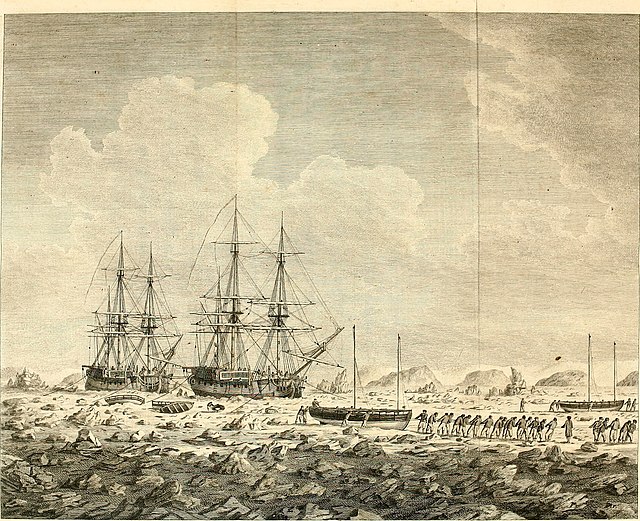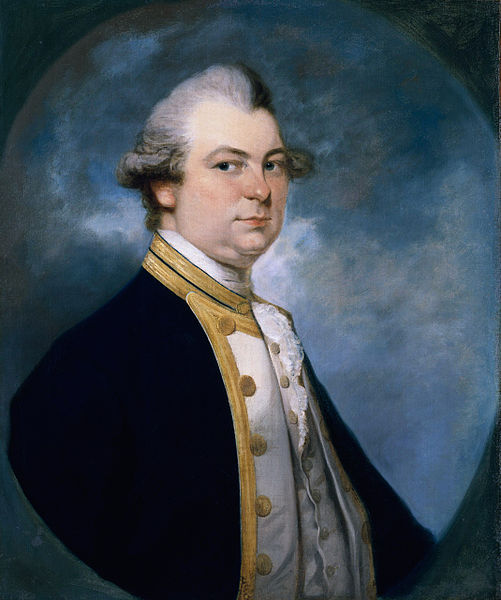1773 Phipps expedition towards the North Pole
The 1773 Phipps expedition towards the North Pole was a British Royal Navy expedition suggested by the Royal Society and especially its vice president Daines Barrington, who believed in an ice-free Open Polar Sea. Two bomb vessels, HMS Racehorse and HMS Carcass, were modified for greater protection against ice and sailed towards the North Pole in the summer of 1773 under the commands of Constantine John Phipps and Skeffington Lutwidge. The ships became stuck in ice near Svalbard. The report of the journey, published by Phipps in 1774, contained the first scientific descriptions of the polar bear and the ivory gull.
HMS Racehorse and HMS Carcass in the ice, engraving after John Cleveley the Younger, from Phipps' 1774 book
Constantine Phipps, by Ozias Humphry
Original plans for HMS Carcass, 1758
Charles Irving's apparatus for distilling seawater
Daines Barrington, FRS, FSA was an English lawyer, antiquary and naturalist. He was one of the correspondents to whom Gilbert White wrote extensively on natural history topics. Barrington served as a Vice President of the Royal Society and wrote on a range of topics related to the natural sciences including early ideas and scientific experimentation on the learning of songs by young birds. He designed a standard format for the collection of information about weather, the flowering of plants, the singing of birds and other annual changes that was also used by Gilbert White. He also wrote on child geniuses including Mozart, who at the age of nine had visited England.
Engraving from a 1770 painting
Pit Mead Roman villa mosaic, illustrations by Catherine Downes, engraved by James Basire and presented to the Society of Antiquaries of London by Barrington






